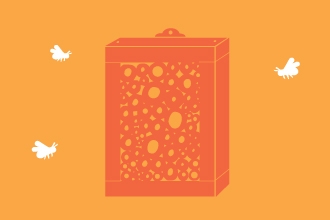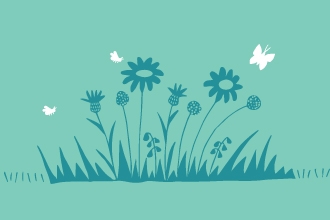Poppy field at Wells Farm by Colin Williams
Our top 10 wildlife sightings for June
Black knapweed by Andy Fairbairn
Poppies
Immortalised in poetry, the common poppy famously turned the battlefields of the Somme into a place of remembrance: the blood-red of the poppies mirroring the atrocities of war.
Though it was once considered a weed of cornfields, the common poppy is in decline due to intensive agricultural practices. This showy flower is now most likely to occur as part of intentional wildflower seeding, but can also be found on roadside verges and in field margins. This time of year you can see a stunning display at Wells Farm nature reserve in Little Milton.
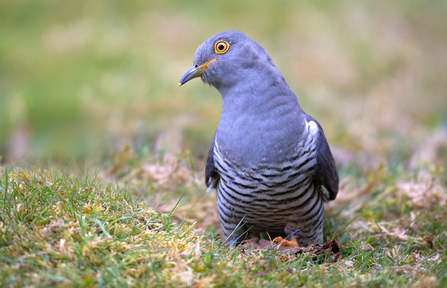
Cuckoo by Jon Hawkins - Surrey Hills Photography
Cuckoo
The cuckoo is a trickster of the natural world. Summer visitors to Britain from Africa, these beautiful birds are notorious for laying their eggs in other birds’ nests, fooling them into raising their young. Young cuckoos often grow much bigger than their host parents, so they require a lot more food and attention than the host's rightful chicks. To this end, they will push their host's eggs or chicks out of the nest.
Listen out for their iconic ‘cuck-oo’ song at our Thatcham Reedbeds reserve.
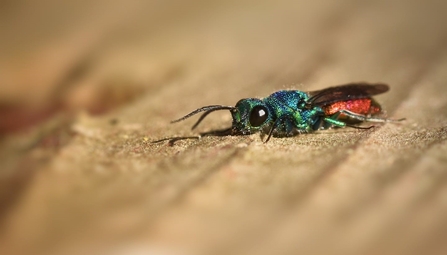
Ruby-tailed wasp by Phil Bruss
Ruby-tailed wasp
A tiny wild highlight that's really worth looking out for this month is the miniscule ruby-tailed wasp. Although less than a centimetre long, these are one of the UK's most beautiful insects with glittering emerald heads, azure thoraxes and ruby-coloured abdomens.
With a similar tactic to the cuckoo – and earning its other name of ‘cuckoo wasp’ – female ruby-tailed wasps lay their eggs in the nests of other solitary bees and wasps, especially mason bees. When the eggs hatch, they eat the larvae of their host!
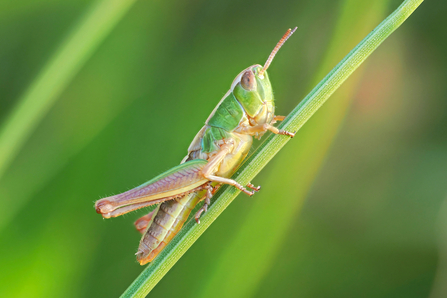
Grasshopper by Andrew Bristow
Grasshoppers and crickets
An iconic sound of summer, the buzzing of grasshoppers and crickets accompanies the increasingly warm and sunny days, and their presence is an indicator of a healthy, functioning countryside.
It can be hard to distinguish between these two types of insects, but from their diet to the size or their antennae, there are a few notable differences between them.
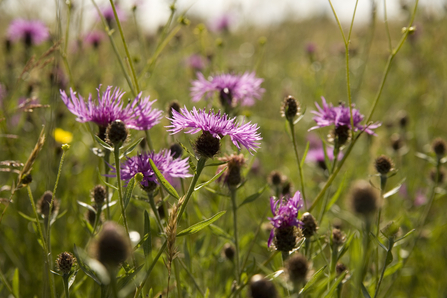
Black knapweed by Andy Fairbairn
Knapweed
Knapweed should be coming into flower this month, adding a splash of pink and purple to meadows, grassland, and even some road verges and gardens that have been left uncut. In bloom until September, this thistle-like plant is a great source of nectar for insects, and later in the year the seeds provide food for birds.
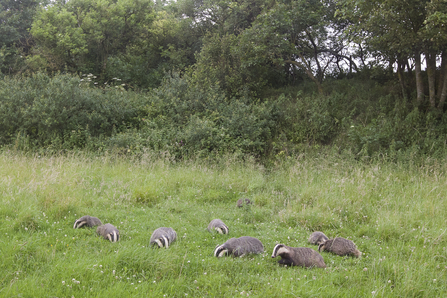
European badger (Meles meles) family and cubs feed in long grass near their woodland sett. Picture: Bertie Gregory/2020VISION
Badger cubs
Having been born deep underground in the late winter, this year's badger cubs are now starting to emerge. Mostly they will do this at night, but you might catch them at dawn or dusk if you are lucky. Did you know - a single badger can eat several hundred earthworms in one night!
Baby birds and fledglings
As well as badgers, you might also notice baby birds and fledglings around this month. It is normal for some fledglings to spend a few days on the ground, their parents are usually nearby keeping a watchful eye so you don't need to do anything for them. However, if you have cats, keep them inside until the birds have gone.
If you're worried about any birds in your garden, have a look at the link below for lots more information.
Yellow-rattle by Lee Schofield
Yellow-rattle
Yellow-rattle is an important plant in wildflower meadows. It is semi-parasitic, feeding off the nutrients in roots of grasses. This weakens the grasses and allows more delicate wildflowers the space to grow.
As summer goes on, the yellow flowers dry and form brown, papery seed pods that rattle with seeds when shaken, giving them their name.
If you're turning part of your garden into a wild patch, scattering yellow-rattle seeds in autumn is a good way to help.

Elderflower (c) Alexandrumagurean
Elderflowers
Masses of frothy white flowerheads cover elder trees in June. The flowers provide nectar for a variety of insects, and their sweet scent is unmistakable as you walk past - the blossom can be used to make the popular elderflower cordial. Later in the year, the masses of dark berries are eaten by birds and small mammals.
It was once believed that elder trees warded off evil spirits or witches, so they were planted near houses to keep them safe!
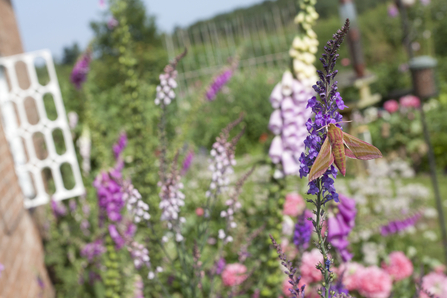
Elephant hawkmoth in a wildlife garden by Tom Marshall
Elephant hawkmoths
The magnificent elephant hawkmoth gets its name from the fact that its grey, wrinkled caterpillar has a long 'neck' like an elephant's trunk. But the adult is more spectacular still, its velvet body a striking mix of bronzy green and hot pink.
A great place to see these winged wonders is our Greenham Common reserve near Newbury.


